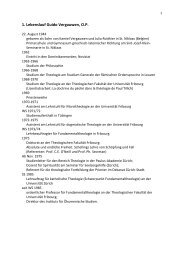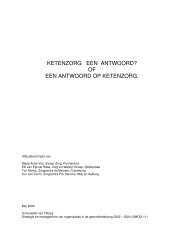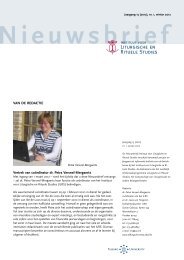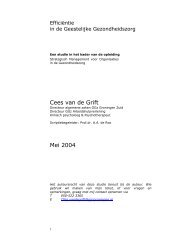Here - Tilburg University
Here - Tilburg University
Here - Tilburg University
You also want an ePaper? Increase the reach of your titles
YUMPU automatically turns print PDFs into web optimized ePapers that Google loves.
The ASA Spring Methodology Conference<br />
Organized in Europe by the Department of Methodology and Statistics at <strong>Tilburg</strong><br />
<strong>University</strong>, the Netherlands.<br />
SESSION: Applications of Latent Variable Models<br />
SUMMARY<br />
For many constructs of interest in the social sciences, educational<br />
measurement, psychology, biology, and economics, no direct method exists for<br />
measurement. Nonetheless, examples of such constructs are legion, for instance<br />
think of political attitudes, abilities, personal traits, or product preferences. To<br />
get a hold of such constructs, researchers gather observable variables (hereafter<br />
called indicators, manifest variables, or items) which they hope will provide<br />
indirect evidence for the constructs of interest. Latent variable models are<br />
statistical models built to quantify and help objectify this type of inference by<br />
deriving a small set of latent unobserved variables that is underlying to the set<br />
of manifest variables and should reflect the constructs of interest. Well-known<br />
instances of this type of modeling approach are factor analysis (Thurstone,<br />
1947), latent class and latent profile analysis (Lazarsfeld & Henry, 1968), and<br />
item response theory (Lord & Novick, 1968).<br />
Although the foundations of latent variable models were laid several years<br />
ago, it has taken quite some time before they became widely applied. This is<br />
mainly due to the statistical nature of these models as well as the sometimes<br />
complicated computations and algorithms needed to estimate latent variable<br />
models. With the recent advances in computation speed and optimization<br />
algorithms and the availability of general purpose software able to fit latent<br />
variable models, this has become less of an issue.<br />
This session is intended as a brief showcase of the possibilities that a<br />
latent variable model framework can offer for research in the social and<br />
behavioral sciences. Each presentation will fill in and illustrate one of the most<br />
familiar model instances in the framework (see Figure).

















